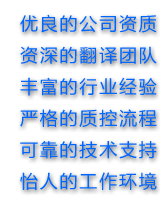太空中女性宇航员如何解决大姨妈问题(双语)
Women here on Earth may think of their periods as monthly inconveniences, but consider what it’s like for astronauts aboard the International Space Station (ISS).
地球上的女性每个月都为大姨妈带来的不便而困扰,那大家想一想远在国际空间站(ISS)的宇航员将面临什么样的困扰呢。
Up there, maintaining personal hygiene in general is not easy, as limited water is available for washing. The added challenges of changing hygiene products in microgravity only make things even more difficult.
在太空中,保持个人卫生可没那么容易,因为水资源是有限的。而且在失重状态下更换卫生产品更是举步维艰。
Then there’s the issue of plumbing: The water recycling system onboard the ISS — used for reclaiming water from urine — wasn’t designed with the possibility in mind that there would be menstrual blood in the mix.
那么问题来了:ISS上的水循环系统主要是用来回收尿液中的水分,但是这个系统无法处理带有月经血的尿液。
Indeed, there are several reasons why an astronaut might want to opt out of getting her period in space. But what’s the best way to go about it? For a short mission, an astronaut may simply choose to time her cycle around her stint in space by using birth control pills, but for longer missions, skipping periods entirely may be preferred, said a new review of the subject, published on April 21 in the journal npj Microgravity.
事实上,宇航员一般在太空上要避开生理期有很多原因。但是如何合理的避开生理期呢?4月21日出版的《npj-微重力》杂志对该话题的研究板块指出,对于执行短期飞行任务的宇航员来说,一般只需服用一些避孕药,来改变经期就可以。而对于执行长期任务的飞行员来说,避开生理期也许是最好的选择。
Skipping periods (also known as “menstrual suppression”) is becoming more common among women in general and is gaining acceptance by more and more doctors, said the review authors, Dr. Varsha Jain, a visiting researcher at the Centre of Human & Aerospace Physiological Sciences in London, and Dr. Virginia Wotring, an assistant professor at the Center for Space Medicine at Baylor College of Medicine in Texas.
伦敦人类与航空生理科学中心的研究员Varsha Jain博士和德克萨斯州贝勒医学院空间医学中助理教授Virginia Wotring博士如是说到,避开生理期(也就是常说的“抑制月经”)在广大女性生活中变得越来越普遍。也有越来越多的医生认可这种做法。
Currently, there are several options for women who choose to skip their periods, but whether these options will fare as well during long spaceflights as they do here on Earth is the question, according to the review.
这项评论指出,目前女性有多种选择来抑制月经。但是这些方法在长期的航空飞行中是否能像在地球上一样有效依然尚未知晓。
“With more women going into space, we need to ensure they have the most up-to-date information on the options available to them, ”Jain said in a statement.
“现在越来越多的女性登上太空,我们必须保证她们对抑制月经方法的最新进展有所了解,”Jain在一份声明中说到。
So what’s an astronaut to do?
那么宇航员该怎么做呢?
One of the most common ways for a woman to skip her period is by taking the pill, which uses a combination of estrogen and progesterone to suppress the menstrual cycle. While the authors of the review note that this method works well (in fact, it’s long been used in spaceflight, they write) some questions do arise.
女性避开月经最常见的方法之一就是服药。一种含有雌性激素和孕激素的药物,能够抑制月经。尽管这项评论的作者提出这种方法非常奏效(其实,这种方法在航空领域已经是老生常谈了),但是仍然有难题。
For example, taking hormones may affect bone density. While such slight losses in bone density are generally not a concern here on Earth, during spaceflight, where bone-density loss is accelerated, this would be more problematic, the authors said.
比方说,服用激素会影响骨密度。评论员提到,虽然轻微的骨密度流失在地球上并不会对人造成多大影响,但是在太空中,骨密度流失速度加快,这就是个大问题了。
And of course, taking the pill each day requires, well, a pill for each day. As audiences learned watching the movie “The Martian,” every extra bit of weight counts on a spaceflight. The review’s authors estimate that a three-year mission would require about 1,100 pills, plus their packaging. The authors also note that the stability of these drugs over such a long time in space has not been tested.
当然,采取服药法要求每天要服下去一丸药。看过‘火星救援’这部电影的观众都知道在太空中,体重轻微的增加也会造成严重的后果。评论的作者预算,宇航员执行时长3年的飞行任务一共要服用大约1100丸药,再加上它们的药壳。而且他还提到,目前还没有测量这些药物在太空中是否能够如此长时间的保持稳定性。
So rather than the pill, long-acting reversible contraceptives, or LARCs, may be an astronaut’s best option, the authors wrote. These contraceptives include intrauterine devices (IUDs) and under-the-skin implants.
因此,该作者写到,排除这种方法,长期可逆避孕(LARC)也许是宇航员的最佳选择。该举措包括宫内放置节育器(IUDs)和皮下植入避孕。
Neither option has been shown to affect bone density in studies on Earth. In addition, a single IUD or under-the-skin implant would eliminate the extra bulk and stability issues of the pill, the authors wrote. And neither option would be expected to interfere with an astronaut’s ability to perform her tasks on the mission, the researchers wrote.
这两种方法目前在地球上还未检测出对骨密度有任何影响。除此之外,IDU和皮下植入避孕可以解决药物的重量和稳定性难题。并且研究人员称,这两种方法也不会干涉宇航员执行其飞行任务。
On a more squeamish note, the authors point out that there are no reports in the medical literature studying whether the devices could shift around in the body as a result of the strong gravitational forces that an astronaut experiences during launch or landing.
但是值得注意的是,该作者指出目前并没有医学界的研究报告提到,这些设备会不会由于发射或者着陆时产生的强大引力而在体内移动。
Currently, two types of IUDs are available. One type, which releases small amounts of hormones into the body over time to suppress a woman’s menstrual cycle, is the preferred option for spaceflight. The other available IUD prevents pregnancy by releasing copper ions, but it does not suppress a woman’s period.
目前,一共出现了两种节育器。一种能够在体内释放激素以抑制女性月经,这种是航空领域的首选。另一种会产生铜离子来产生避孕效果,但是并不能抑制月经。
Subdermal implants work in a similar way as the hormonal IUD; they release small amounts of hormones over time. Unlike IUDs, however, which are inserted into the uterus, the subdermal implant is inserted just beneath a woman’s skin, typically in the upper arm. The implant doesn’t usually interfere with a woman’s clothing on Earth, and it’s unlikely that the method would cause problems in specific spacesuits, the review said.
皮下植入节育器和IDU的工作原理是一致的。它们都会不断释放少量的激素。与IDU不同的是,皮下植入节育器是植入皮肤表层,一半都是在上臂皮肤内,而IDU是植入子宫内。评论称,皮肤表层植入在地球上不会对女性的穿衣造成困扰,也更不可能在航天服方面造成不便。
Because both options take time to effectively suppress a woman’s period, the authors said that an astronaut who chooses a LARC should have it inserted at least 1.5 to 2 years before her mission.
该作者称,由于这两种方式在抑制月经方面都需要一定的时间才能生效,因此打算采取LARC方式的宇航员在执行任务时应该提前至少一年半到两年的时间植入设备。
- 相关文章
- 潮人教你选墨镜:脸型与镜框如何完美搭配 (2016-6-27 14:30:14)
- 猴年马月真的来啦:英文要怎么说? (2016-6-27 14:30:1)
随机文章













